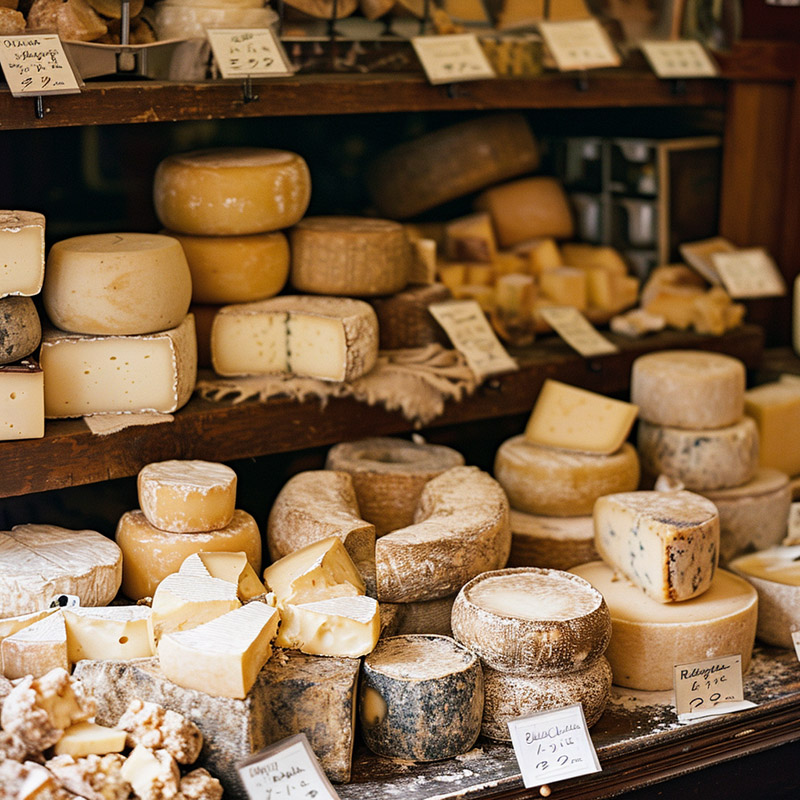New Article: Ten Best Cheeses for Mac and Cheese
The word "cheese" comes from the Urdu word chiz meaning thing, from whence comes from the slang expression "the cheese" meaning "the perfect thing" apparently from Anglo-Indian usage.
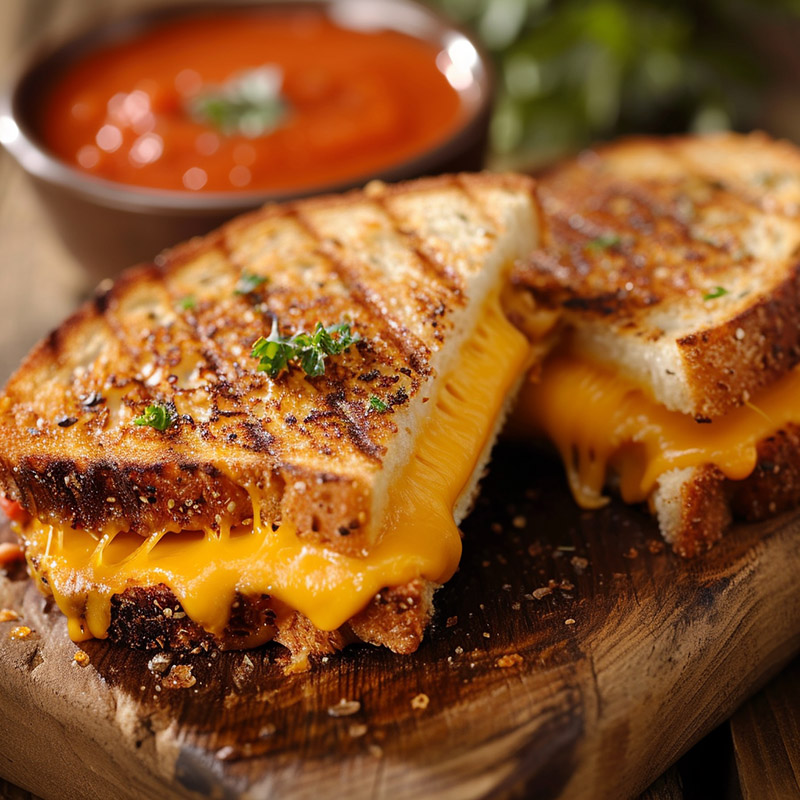
A solidified preparation from milk, the essential constituent of which is the protein or nitrogen substance casein. All cheese contains in addition some proportion of fatty matter or butter, and in the more valuable varieties the butter present is often greater in amount than the casein. Cheese being thus a compound substance of no definite composition is found in commerce of many different varieties and qualities; and such qualities are generally recognized by the names of the localities in which they are manufactured
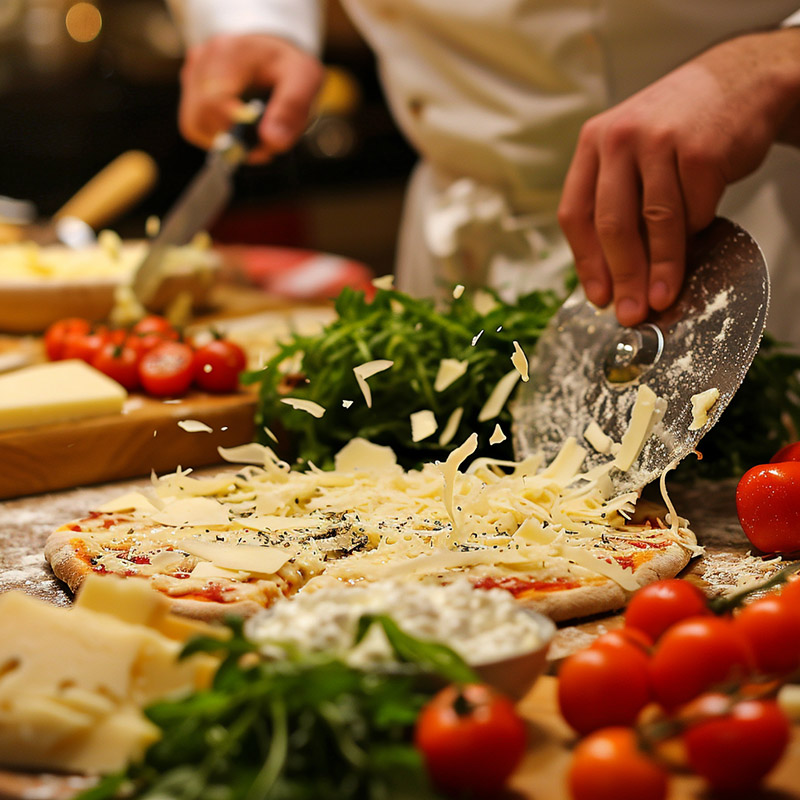
The history of cheese is a fascinating journey that spans thousands of years, intertwining with the history of human civilization itself. Cheese is believed to have originated when early humans began domesticating animals and processing their milk. While the exact origins are unknown, it is generally thought that cheese making began around 8000 BCE, coinciding with sheep domestication in the Fertile Crescent, an area that includes parts of modern-day Iraq, Jordan, Syria, Israel, Palestine, Southeastern Turkey, and Western Iran.
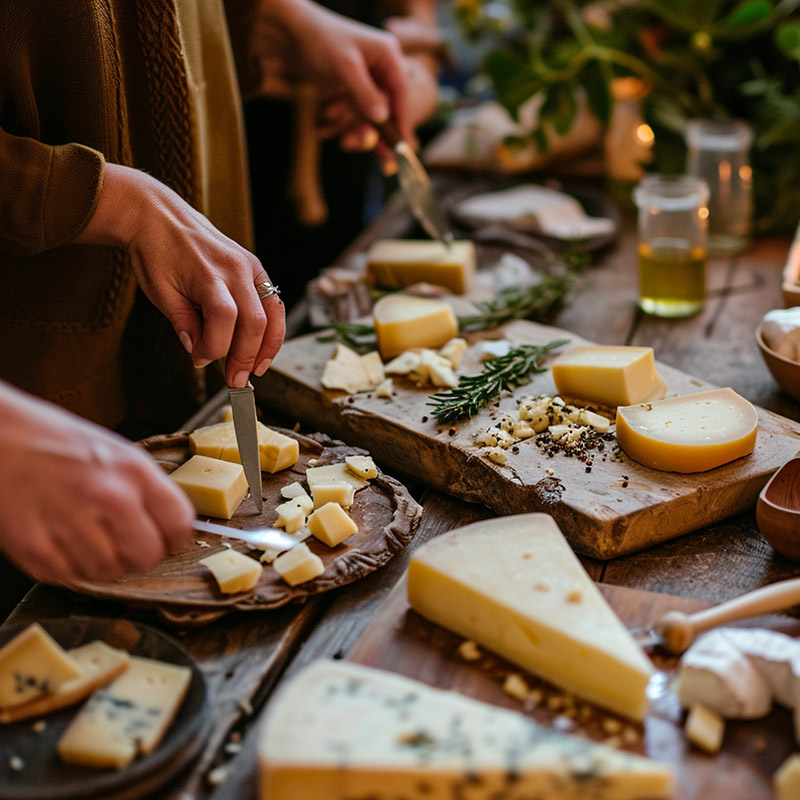
The discovery of cheese is often attributed to an ancient legend where milk was transported in containers made from animal stomachs, which naturally contained rennet, an enzyme crucial in the cheese-making process. The combination of rennet, the warm temperature, and the movement during travel would have caused the milk to separate into curds and whey, essentially forming a basic form of cheese.
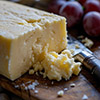 Irish Cheddar - from Ireland's rich dairy tradition and lush green pastures
Irish Cheddar - from Ireland's rich dairy tradition and lush green pastures
 Limburger Cheese - A cheese as rich in history as it is in flavor and scent
Limburger Cheese - A cheese as rich in history as it is in flavor and scent
As civilizations grew, so did the art of cheese making, with different regions developing their unique varieties based on local environments and techniques. The ancient Egyptians, Greeks, and Romans were all known to have been skilled cheese makers. Cheese was valued in ancient Rome and was often included in feasts. It was also a practical food for soldiers and travelers due to its portability and long shelf life.
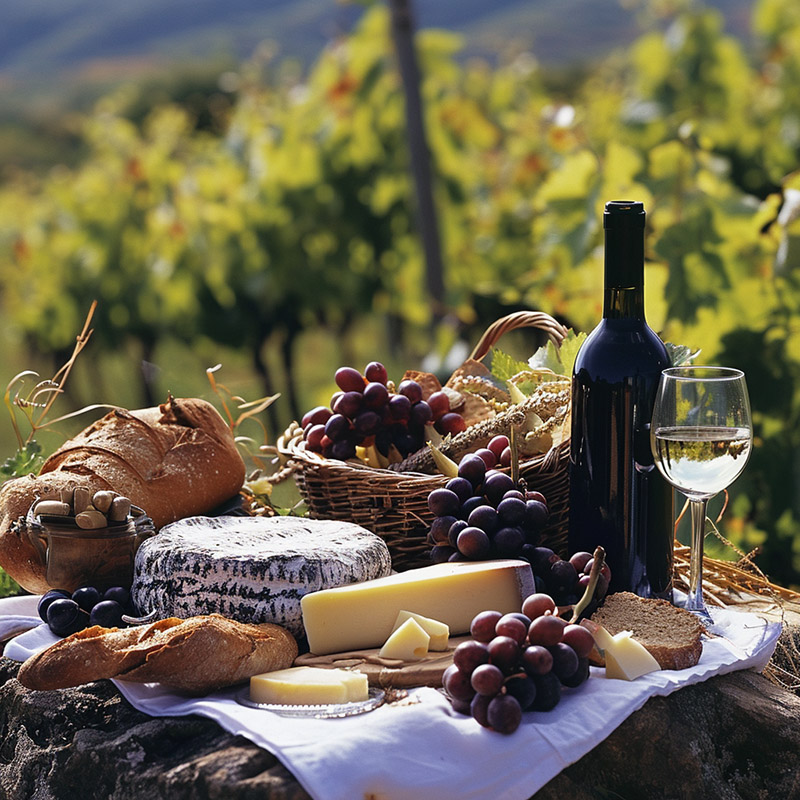
By the time of the Roman Empire, cheese making had become a widespread, sophisticated enterprise. The Romans were instrumental in refining the cheese-making process, aging techniques, and introducing cheese to the areas they conquered. From Europe, cheese making spread to other parts of the world.
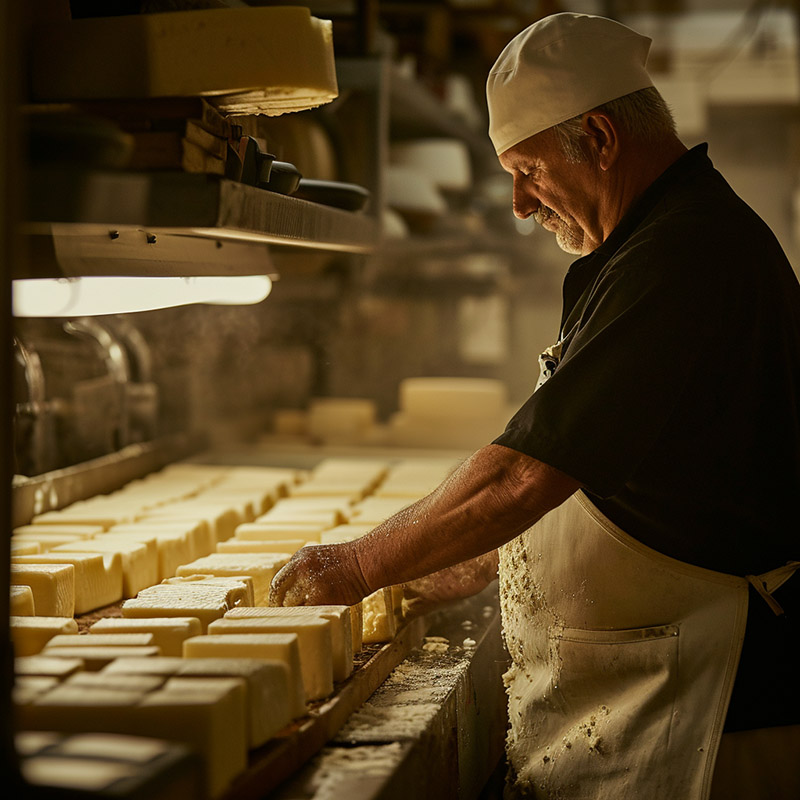
The Middle Ages saw the establishment of monasteries that became centers for fine cheese making, particularly in France and Italy. Monks experimented with different methods of production, giving rise to some of the classic European cheeses known today, like Roquefort and Gouda.
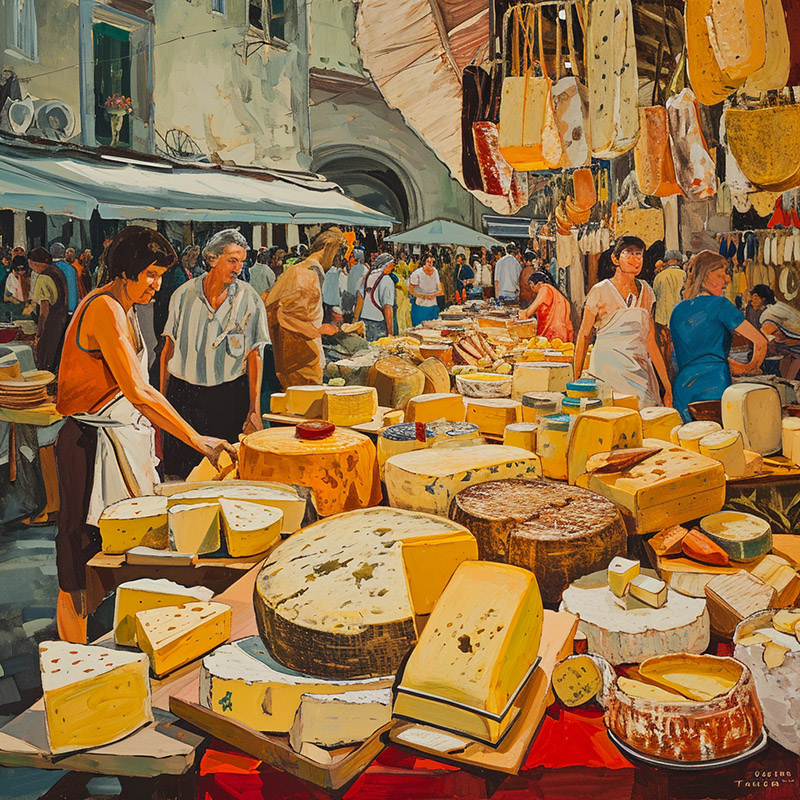
The Industrial Revolution in the 19th century marked a significant turning point in cheese production. The invention of the mechanical cream separator and pasteurization led to mass production and standardization of cheese. This period also saw the birth of some now-famous cheese types, such as Cheddar and Brie.
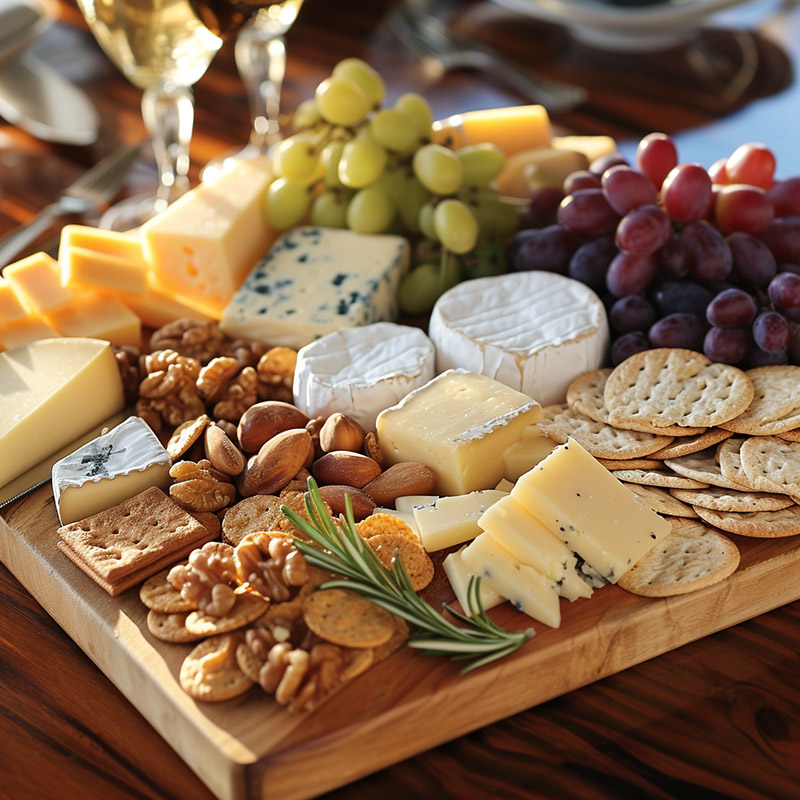
In the 20th century, the United States became a major cheese producer, with innovations in production and marketing. Processed cheese was invented in this era, changing the cheese landscape once again. Today, cheese is a global industry, with thousands of varieties available, each with its distinct taste, texture, and history.
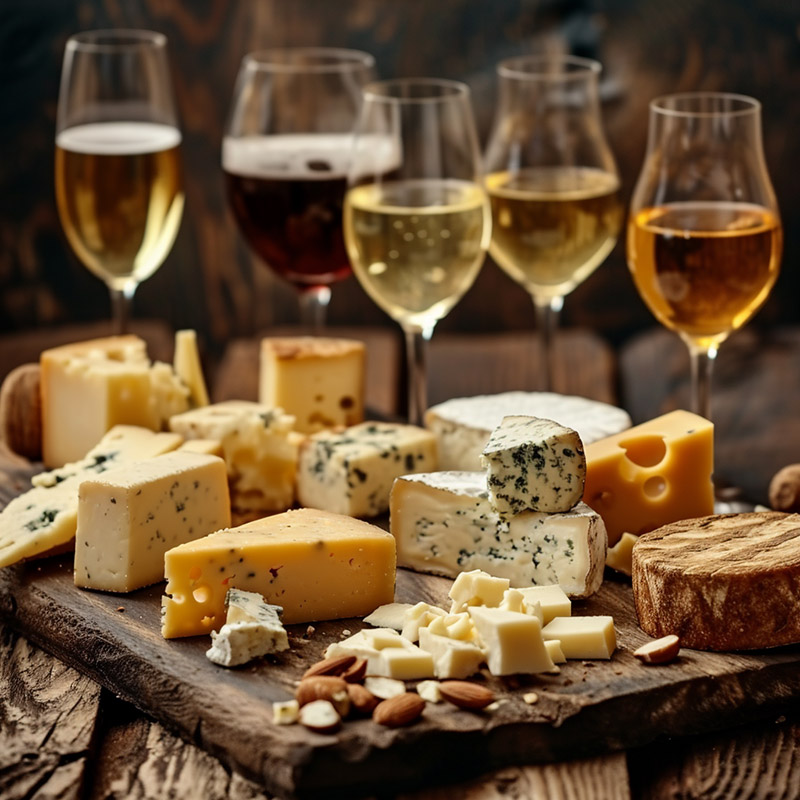
From its accidental discovery to becoming a gourmet item, the history of cheese reflects human innovation, cultural exchange, and the diversity of agricultural practices. Cheese is a cultural artifact that has evolved with us, telling a story of human civilization through its myriad flavors and forms.
